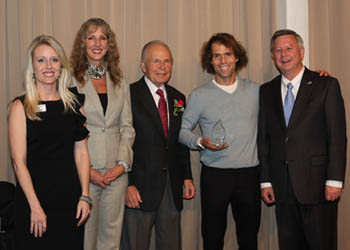The end of the year is upon us, and now is the perfect time to reflect on what went well with your employee wellness program in 2012, what didn’t go so well, and what the goals will be for next year. Even if you aren't preparing for a formal evaluation of your employee wellness program, it can help to assess your success at the end of each year as a way to pause and look back at where you've come from and where you'd like to go.
Why You're Struggling to Measuring the Value of Worksite Wellness
Building a culture of wellness in the workplace is one of the most rewarding yet challenging tasks for HR professionals.
One of the most common hurdles is responding to the critical question: “What’s the ROI?”
While reducing healthcare costs and enhancing quality of life are often highlighted as key benefits, the reality is more complex. Factors such as employee turnover, shifting policies, privacy concerns, and new insurance carriers can obscure the return on investment. Moreover, the lack of standardized metrics for measuring wellness ROI makes it difficult to compare results across organizations. Some companies assess sick days, corporate fitness center usage, or healthcare claims, while others focus on employee self-perception or employer ratings.
Topics: Wellness at Work
TotalWellness Founder Receives Annual Light of Wellness Award
Alan Kohll, founder and president of TotalWellness, was honored at the William M. Kizer Light of Wellness Awards Dinner on Thursday, Nov. 8. Governor Dave Heineman and Dr. Joann Schaefer, chief medical officer of the State of Nebraska, attended the ceremonies at the Mutual Of Omaha Dome. This year, 19 winners were recognized in one of three categories: leadership, Health Transformation, or Health Inspiration.
Topics: Wellness at Work
Wellness Communication: 4 Tips for Cutting Through the Clutter
Effective internal communication is critical to driving high employee participation in worksite wellness programs. Unfortunately, in today’s work environment of information overload, employees are inundated with messages. Human Resources and Health Promotion professionals have to cut through the noise of other competing messages and work priorities if they hope to have success with their wellness efforts.
Topics: Wellness at Work
Research indicates that wellness programs reduce health care costs, with reductions for large companies averaging $3.27 for every dollar spent on wellness programs, according to a policy brief from Health Affairs.
Topics: Wellness at Work
More employers are encouraging employees to quit smoking with incentives (or penalties!) According to the Society for Human Resource Management’s (SHRM’s) 2018 Employee Benefits survey report, 16% of employers provide a discount on health insurance premiums to people who do not use tobacco products, 10% offer a discount for participating in a program to quit smoking and 18% impose a smoking surcharge.
Given the often high-valued health care discounts, many employers are turning to nicotine testing to discourage dishonesty and ensure incentives are appropriately distributed.
The Secret Sauce of Extraordinary Worksite Wellness Programs
“The purpose of worksite wellness is not to change people, but to change the culture.”
-Dr. Dee Edington
Topics: Wellness at Work
Topics: Wellness at Work
Our very own National Account Executive Sara Garcia wrote a feature article for the ACSM’s Health & Fitness Journal® September/October 2012 issue.
Topics: Wellness at Work












